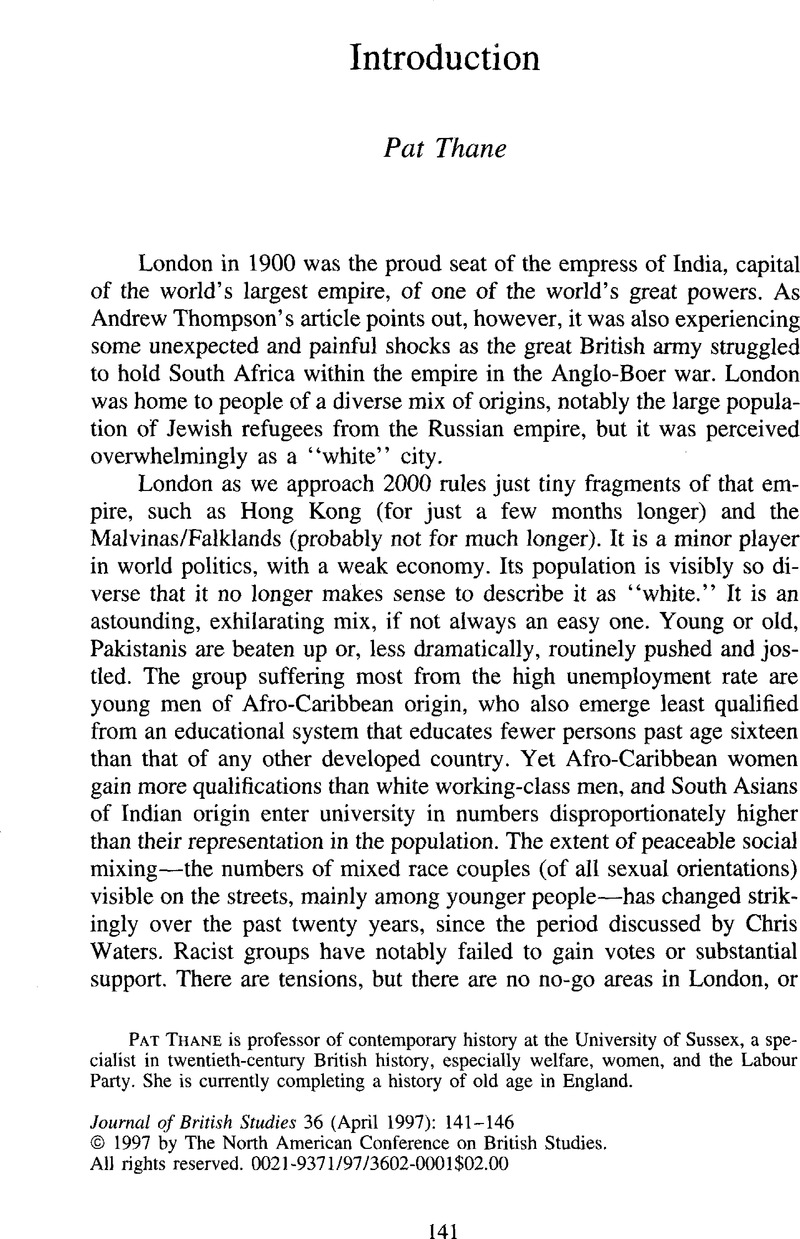Article contents
Abstract

- Type
- Introduction
- Information
- Journal of British Studies , Volume 36 , Issue 2: Twentieth-Century British Studies , April 1997 , pp. 141 - 146
- Copyright
- Copyright © North American Conference of British Studies 1997
References
1 I prefer not to adopt Waters's inclusive use of “Black,” which I fear subsumes and subordinates linguistically the variety of South Asian communities, other large groups such as the Turks, and many smaller ones such as the growing number of Iraqi refugees.
2 Dummett, A. and Nicol, A., Subjects, Citizens and Aliens: Nationality and Immigration Law (London, 1990)Google Scholar.
3 For an introductory discussion of this, see Thane, Pat, “The British National State and the Construction of National Identities,” in Borderlines: Genders and Identities in Peace and War, 1870–1930, ed. Melman, Billie (London, in press)Google Scholar.
4 Tabili, Laura, “The Construction of Racial Difference in Twentieth Century Britain: The Social Restriction (Coloured Alien Seamen) Order, 1925,” Journal of British Studies 33, no. 1 (January 1994): 54–98CrossRefGoogle Scholar.
5 Quine, Maria-Sophia, Population Politics in Twentieth Century Europe (London, 1996)CrossRefGoogle Scholar.
6 Beveridge, W., “Population and Unemployment,” in Essays in the Economics of Socialism and Capitalism: Selected Papers Read to Section F, The British Association for the Advancement of Science, 1886–1932, ed. Smyth, R. L. (London, 1964), p. 270Google Scholar.
7 See Thane, Pat, “The Debate on the Declining Birth Rate in Britain: The ‘Menace’ of an Aging Population, 1920s–1950s,” Continuity and Change 5, no. 2 (1990): 283–304CrossRefGoogle Scholar.
8 Titmuss, R. M., Poverty and Population: A Factual Study of Contemporary Social Waste (London, 1938), p. 53Google Scholar.
9 “Report of the Royal Commission on Population,” Parliamentary Papers, 1948, vol. 19, p. 124Google Scholar.
- 1
- Cited by


